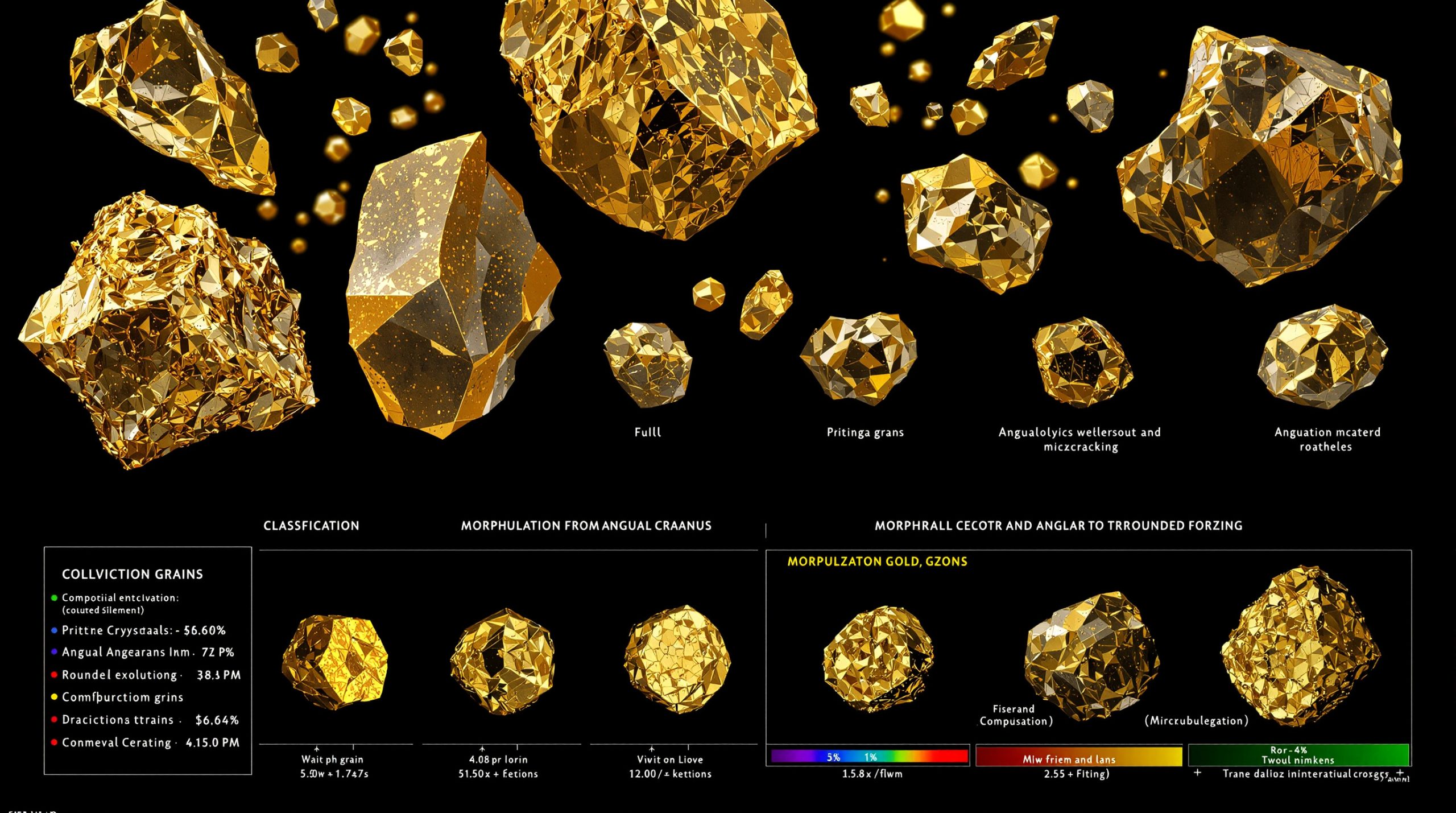What's Driving the Current Gold and Silver Rally?
Recent Performance Metrics
Gold has demonstrated remarkable strength recently, surging an impressive 5% in a single week according to the latest market data. This exceptional performance comes after gold experienced a modest correction of only 11% from its peak – significantly less than the anticipated 15% pullback many analysts expected.
Meanwhile, silver continues to test the critical $34-35 resistance zone, showing remarkable resilience despite multiple challenges. The mining sector has responded enthusiastically, with the VanEck Gold Miners ETF (GDX) jumping 9% in a single week, while junior mining stocks display particularly strong momentum.
"What we're witnessing isn't your typical correction," explains Jordan Roy-Byrne of The Daily Gold. "Gold is forming a bullish consolidation rather than continuing a deeper correction. The price damage appears complete, and we're now in a time correction phase before the next leg higher."
Technical Breakout Patterns
Technical analysis reveals gold is forming a bullish consolidation pattern rather than continuing its correction. This pattern typically involves sideways or slightly downward movement without significant price damage, allowing technical indicators to reset while maintaining the underlying bullish structure.
Silver's chart shows a potential ascending triangle formation with multiple tests of the critical $34-35 resistance zone. This pattern is particularly significant because it features higher lows leading into horizontal resistance – a classic bullish setup.
"The technical structure in the gold mining sector is exceptionally strong," notes Roy-Byrne. "Gold stocks have broken out from a 4.5-year base, while Canadian gold stocks are showing a 14-year breakout pattern. These are not short-term moves – they represent major structural shifts in the precious metals market."
Junior silver miners have established strong support levels that have been repeatedly tested and held, suggesting solid foundations for the next move higher. Triple-tested support levels, like the $13 mark in the SILJ ETF, indicate accumulation by smart money investors ahead of a potential breakout through silver squeeze dynamics.
How Are Gold and Silver Performing Against Other Markets?
Precious Metals vs. Equity Markets
Gold has been strengthening against the S&P 500 index, with the gold-to-S&P ratio showing a notable uptrend. This performance is particularly impressive considering the broader stock market has been experiencing increased volatility due to emerging concerns about new tariff policies and their potential economic impact.
Mining stocks have been significantly outperforming broader equity indices, with GDX, GDXJ, and SILJ all displaying positive relative strength. This outperformance during periods of market uncertainty highlights gold and silver's traditional role as safe-haven assets.
"When mining stocks outperform both metals and the broader market, it's typically a leading indicator of continued strength in the entire precious metals sector," explains Roy-Byrne. "The most robust bull markets feature miners leading the way, creating a virtuous cycle of investment flows."
Bond Market Dynamics
The 10-year Treasury yield has been trending higher with only recent pullbacks, while the 30-year yield shows even stronger upward movement. These rising yields traditionally create headwinds for non-yielding assets like gold and silver by increasing opportunity costs for investors.
What makes the current rally particularly noteworthy is gold's ability to maintain strength despite these yield pressures. This unusual dynamic suggests powerful underlying fundamentals are supporting precious metals beyond their inverse relationship with interest rates.
Market analysts point to several factors that may explain this divergence, including persistent inflation concerns, geopolitical uncertainty, and growing questions about long-term currency stability. Gold's performance against both equities and bonds positions it uniquely in the current market landscape.
What Technical Patterns Are Forming in Gold?
Gold's Bullish Consolidation Structure
Gold has established solid support slightly below the psychologically important $3,000 level, with clearly defined resistance zones at key technical levels. The 200-day moving average provides a potential support floor that has historically proven reliable during bull market phases.
Technical analysts note that the price damage appears complete, with a time correction now more likely than further significant downside. This pattern is reinforced by recent weekly candle formations showing exceptional strength and buying pressure at support levels.
"The weekly candle pattern we're seeing shows remarkable resilience," observes Roy-Byrne. "When gold rebounds this strongly after a moderate correction, it typically signals that the primary trend remains firmly bullish."
Historical Analogs and Projections
Current price patterns are following historical all-time high breakout analogs, suggesting the potential for continued upward momentum. Analysis of previous bull markets in gold indicates a potential target of $5,000 within 15-16 months, placing this objective around summer 2026.
This bullish consolidation phase may continue for several more months before the next significant leg higher begins. Historical patterns suggest a possible 17-20% correction might occur after reaching the $4,000-4,500 range, offering another potential entry point for investors who miss the current opportunity.
"When we analyze the average of the best cyclical bull markets in gold's history, we see a consistent pattern," explains Roy-Byrne. "Following consolidation after a major breakout, gold typically accelerates into a 15-18 month advance that can deliver gains of 60-80% from the breakout point."
What's Happening with Silver's Technical Structure?
Silver's Critical Resistance Levels
Silver faces a major resistance zone at $34-35 that has been repeatedly tested in recent months. This price level represents a significant technical and psychological barrier that, once broken, could trigger substantial upside momentum.
Multiple successful tests of support at the $28-29 level have reinforced silver's underlying strength. Technical analysts note that each test of support that holds increases the probability of an eventual upside breakout. An intraday test of the 80-week moving average recently held as support, further confirming the bullish technical structure.
"Silver's measured upside target of $41 on a breakout above $35 is derived from classic technical analysis," explains Roy-Byrne. "The height of the consolidation pattern, when added to the breakout point, gives us this objective. Price action suggests an increasing probability of this upside breakout occurring within the next few months."
Silver's Post-Gold Breakout Performance
Silver initially underperformed gold's breakout move, which is not unusual in precious metals bull markets. Historical analogs suggest a potential acceleration phase approaching, particularly if silver can convincingly break above the $35 resistance level.
A breakout above $35 could trigger a rapid move to the $37-42 range based on technical projections and previous price behavior. Silver juniors are showing particularly strong technical formations, often leading the physical metal in signaling major trend changes.
"The SILJ ETF has tested support at $13 multiple times and held firm," notes Roy-Byrne. "This triple-bottom formation creates a solid foundation for the next move higher. When silver finally breaks resistance, these junior miners could deliver exceptional returns due to their operational leverage to higher silver prices."
How Are Mining Stocks Positioned in This Rally?
Gold Stock Technical Analysis
The VanEck Gold Miners ETF (GDX) has established solid support in the low $40s after its recent breakout, while the Junior Gold Miners ETF (GDXJ) shows a classic technical support pattern that has consistently held during pullbacks.
The Philadelphia Gold and Silver Index (XAU) has confirmed broader sector strength with its own technical breakout. Canadian gold stocks, tracked by the iShares S&P/TSX Global Gold Index (XGD), are demonstrating exceptional momentum after breaking out from a 14-year base – a rare and powerful technical signal.
Strong weekly candle patterns across the mining sector suggest continued upward pressure. These formations, characterized by strong closes near the highs of their respective ranges, indicate institutional accumulation and growing investor confidence.
"When mining stocks break out from multi-year bases like we're seeing now, the ensuing moves can be spectacular," explains Roy-Byrne. "The 14-year base breakout in Canadian gold stocks is particularly significant – patterns of this duration often lead to moves of similar magnitude on the upside."
Silver Stock Opportunities
Silver miners are poised for significant upside if the metal breaks above its resistance level. The limited number of quality silver producers creates a scarcity premium that becomes particularly valuable during strong bull markets.
The SILJ ETF is forming a bullish pattern with a $16 upside target based on technical projections. Junior miners offer 3-5x potential over the next few years due to their operational leverage and relatively small market capitalizations.
High-quality mining companies are likely to command premium valuations as the rally progresses, particularly those with strong production profiles, low costs, and significant exploration upside. Companies with primary silver exposure are especially well-positioned given silver's dual role as both a precious and industrial metal.
"Silver mining stocks represent one of the most asymmetric opportunities in the current market," notes Roy-Byrne. "The combination of silver's historical volatility and the operational leverage inherent in mining companies creates the potential for exceptional returns as this bull market develops."
What Investment Strategy Makes Sense in This Environment?
Portfolio Positioning Considerations
Market analysis suggests holding positions through consolidations is proving more effective than attempting to trade short-term moves in this environment. Profit-taking opportunities will likely emerge when markets go vertical, displaying parabolic price action accompanied by extreme sentiment readings.
Breadth indicators are not yet showing extreme readings, suggesting the current rally still has room to run before becoming overextended. Investors should focus on the highest quality fundamental companies with the greatest upside potential rather than speculating on marginal producers.
"Silver stocks are presenting a particularly compelling opportunity at this juncture," observes Roy-Byrne. "Their underperformance relative to gold producers has created a valuation gap that is likely to close as silver approaches its resistance breakout level."
Risk Management Approach
Current support levels provide clear risk parameters for investors looking to establish or add to positions. Trading in and out of positions has created unnecessary risk in what appears to be a strong bull market, with many investors missing significant gains by attempting to time short-term moves.
Maintaining core positions through corrections has shown better results than frequent trading, based on historical performance during similar market phases. Technical support levels offer potential entry points for new positions or for adding to existing holdings during pullbacks.
"Quality over quantity should be the mantra for precious metals investors right now," advises Roy-Byrne. "Focusing on companies with strong balance sheets, experienced management teams, and high-grade assets will likely outperform a scattered approach across numerous speculative names."
What Are the Key Levels to Watch?
Critical Support and Resistance Zones
For gold, the key support level sits around $3,000, with resistance at the recent all-time highs. Silver faces major resistance at $34-35, with established support at $28-29 that has held during recent pullbacks.
The GDX ETF has support at $41-42, with resistance at its recent highs. GDXJ shows support at $53-54 and displays upside breakout potential above its recent range. The SILJ ETF has triple-tested support at $13, with a technical target of $16 on a decisive breakout.
"These key levels provide both strategic entry points and risk management parameters," explains Roy-Byrne. "The multiple tests of support across various precious metals vehicles suggest accumulation is occurring, which typically precedes significant upside moves."
Timing Considerations
Gold is likely to consolidate bullishly for several more months before its next major advance. Silver's breakout could occur within 2 weeks to 2 months based on current price action and historical patterns.
Mining stocks are threatening to break above their recent highs in the coming weeks, potentially leading the next move higher in the sector. Technical analysis suggests a potential acceleration phase in the precious metals sector is approaching, based on the maturity of the current consolidation pattern.
Historical analogs point to major moves developing over the next 12-15 months, with summer 2026 representing a potential target zone for significantly higher prices across the precious metals complex.
"The current technical setup suggests we're in the early-to-middle stages of a major bull market in precious metals," notes Roy-Byrne. "The breakout from multi-year bases we've witnessed typically leads to sustained moves that unfold over several years, not merely months."
Frequently Asked Questions About Gold and Silver
What's the difference between a correction and a bullish consolidation?
A correction typically involves significant price declines (15-20%) with bearish sentiment and deteriorating market internals. A bullish consolidation, by contrast, is a milder form of correction where prices move sideways to slightly lower while maintaining positive market structure, allowing technical indicators to reset without substantial price damage.
During bullish consolidations, support levels hold, volume patterns remain constructive, and sentiment doesn't reach extreme bearish readings. These periods often resolve to the upside with less warning than traditional corrections, making them more difficult for traders to time but ultimately healthier for the longer-term trend.
Why is the $35 level so significant for silver?
The $34-35 range represents major multi-year resistance that has been tested multiple times. This level has historical significance dating back several years and represents a key psychological barrier where significant sell orders have repeatedly emerged.
A decisive break above this zone would likely trigger substantial technical buying from momentum traders, institutional investors, and algorithmic trading systems. This combination of new buying and short-covering could potentially lead to an accelerated move toward the measured upside target of $41.
"Silver's $35 resistance level is so significant because it represents the gateway to a potential new trading range," explains Roy-Byrne. "Once this level is decisively broken, silver could quickly establish itself in the $40+ range, representing a major regime change for the metal."
How do rising bond yields affect precious metals?
Rising yields traditionally create headwinds for non-yielding assets like gold and silver by increasing opportunity costs. When investors can obtain higher guaranteed returns from bonds, the relative attractiveness of holding zero-yield assets like precious metals typically diminishes.
However, in the current environment, precious metals are showing strength despite yield pressures, suggesting underlying fundamental support from factors like inflation concerns, geopolitical uncertainty, and questions about long-term currency stability. This divergence from traditional correlations indicates powerful bullish forces supporting the precious metals complex.
The relationship between yields and precious metals is also influenced by real yields (nominal yields minus inflation) rather than nominal yields alone. In environments where inflation expectations remain elevated, gold and silver can perform well even as nominal yields rise.
What makes silver juniors particularly attractive in this market?
Silver junior miners offer exceptional leverage to rising silver prices due to their smaller market capitalizations and production profiles. With relatively few quality silver producers available, these companies can experience dramatic valuation increases when silver breaks key resistance levels.
The operational leverage inherent in mining companies amplifies the effect of metal price changes on profitability. A 10% increase in silver prices might translate to a 30-50% increase in operating margins for a silver producer, particularly if they have fixed costs and increasing production.
"Silver juniors have the potential to deliver 3-10x returns in strong bull markets," notes Roy-Byrne. "Their scarcity value becomes particularly important as institutional capital seeks exposure to the sector, often creating bidding wars for quality assets as the bull market matures."
When is the right time to take profits in mining stocks?
The optimal time to reduce positions is typically when markets show signs of going "vertical" with parabolic price movements and when breadth indicators reach extreme levels. These conditions suggest temporary exhaustion and often precede corrections.
Warning signs include daily price gains of 5-10% across multiple stocks with no specific news catalyst, extreme RSI readings above 80 on daily charts, and sentiment surveys showing overwhelmingly bullish readings. Volume spikes that exceed 300-500% of daily averages can also signal climactic buying that often marks short-term tops.
"Rather than trying to pick the exact top, a more effective approach is scaling out of positions as technical extremes develop," advises Roy-Byrne. "Reducing 20-30% of holdings during parabolic moves allows investors to maintain core exposure while locking in profits that can be redeployed during subsequent corrections."
What's the Outlook for Precious Metals in 2025-2026?
Gold Price Projections
Technical analysis points to a potential target of $5,000 for gold by summer 2026 based on historical analogs from previous bull markets. The current bullish consolidation is likely to continue for several more months before the next major leg higher begins.
After reaching the $4,000-4,500 range, historical patterns suggest a possible 17-20% correction may occur, providing another potential entry point for investors. Support levels are holding well above previous breakout points, confirming the strength of the underlying bull market.
"The technical structure we're seeing in gold suggests this bull market has considerable room to run," explains Roy-Byrne. "When we analyze how gold has performed following similar breakout patterns throughout history, the current setup projects to approximately $5,000 within 15-16 months."
Silver Price Expectations
A breakout above $35 would initially target $41 based on measured move projections from the current consolidation pattern. Historical patterns suggest silver is approaching an acceleration phase that could see it outperform gold once key resistance levels are cleared.
Multiple successful tests of support have increased the probability of an upside breakout in the coming months. The limited supply of quality silver assets in the market creates the potential for premium valuations as institutional investors seek exposure to the sector.
"Silver has historically outperformed gold in the middle to later stages of precious metals bull markets," notes Roy-Byrne. "Its smaller market size makes it more volatile, but this also creates the potential for spectacular gains once its uptrend is firmly established."
Mining Stock Implications
Mining stocks are likely to continue outperforming physical metals as the bull market progresses, with junior miners offering the greatest leverage to rising prices. Quality companies may become "too expensive" by traditional metrics within 3-12 months, but could still deliver substantial returns
Want to Capitalise on the Next Major Mineral Discovery?
Don't miss out on potential returns from the next big gold or silver discovery on the ASX. Explore Discovery Alert's dedicated discoveries page to understand how significant mineral finds can generate substantial market returns, and gain immediate access to real-time alerts powered by the proprietary Discovery IQ model at https://discoveryalert.com.au/discoveries/.




